

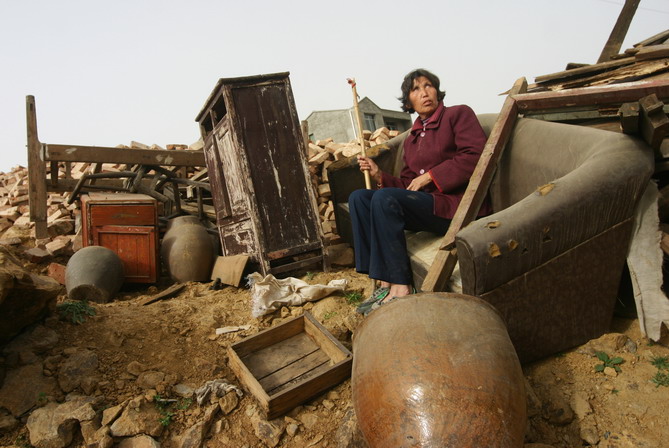
Without enough compensation to build a new house, Li Fuhua, who is blind, left her furniture outside of the migration office where she was temporarily accommodated.
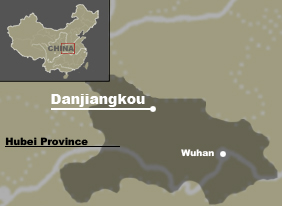
Whether willing or impelled, for employment or for education, millions of Chinese are migrating. At a small county named Danjiangkou in the mid-reaches of the Yangtze River, a new form of migration was taking place. To realize the great plan of diverting water from the south to the north, locals were called on to sacrifice their homes and start new lives elsewhere.
First suggested by Chairman Mao Zedong in the 1950s, the "water diversion" program aims to ease water resource shortage in north China by transferring water from the Yangtze River through three routes--western, eastern, and the middle. Located at the beginning of the middle route, Dangjiangkou had to transfer many of its residents to other places to make room for the expansion of its reservoir.
In Caiwan village, 121 households were forced to move to vacant land below the dam. With some 10,000 yuan compensation distributed to each of the displaced, most households had to borrow money to build their new homes. Beside the residential area was a piece of open land meant for farming, but the salty soil could barely cultivate any crop, locals said. For them, it was still an extravagant hope to rebuild even their former simple lives: having a house to live in and land to work on.
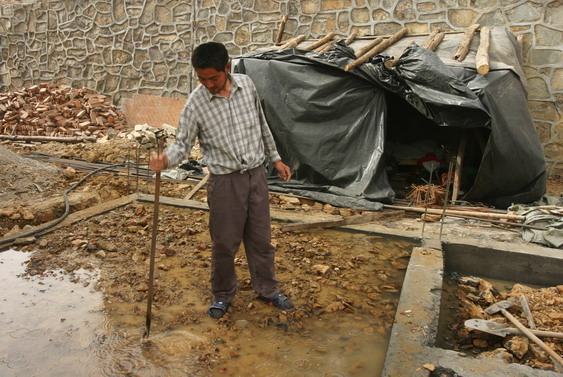
Having lived in a tent with his family for eight months, Zhang Zhenlin might have to continue this life for a time since the 30,000 yuan compensation only built him the foundations of a house.
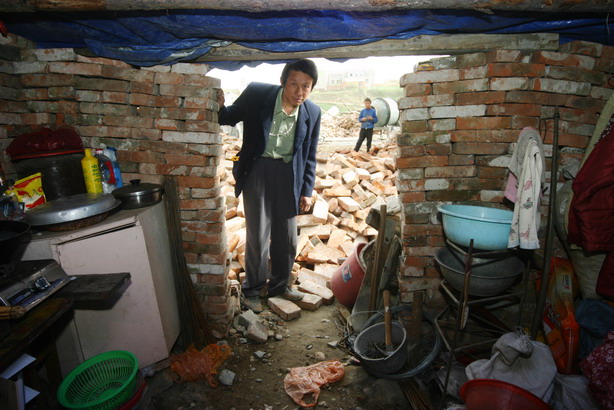
With four kids, Zhang Zhengyu's family were compensated with over 70,000 yuan for their home, which made them "the rich" in the neighborhood.
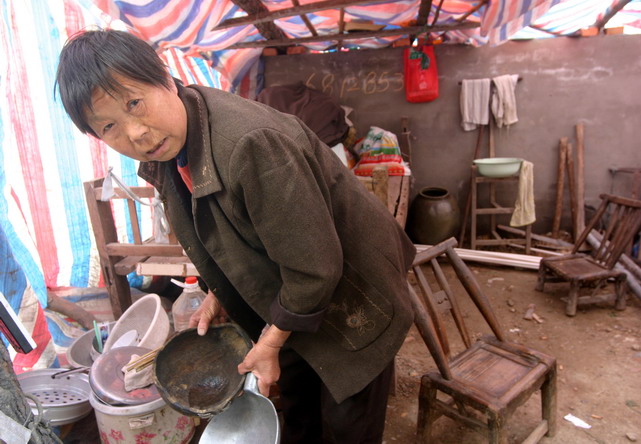
70-year-old Zhang Yongying prepared lunch in her temporary home.
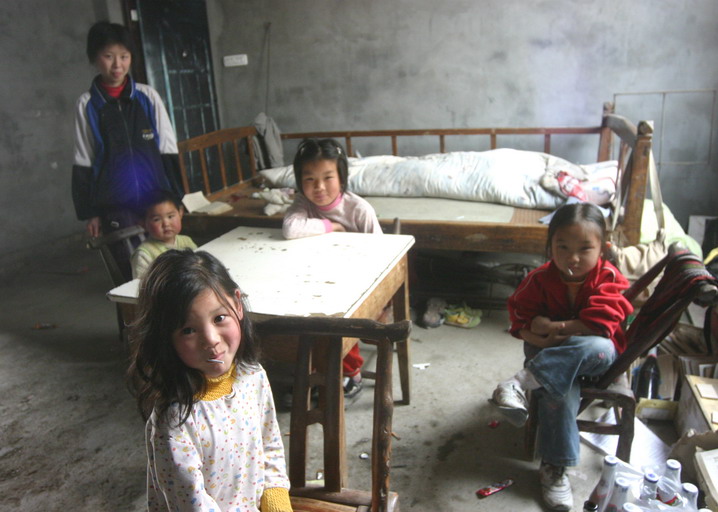
Kids gathered in a bare, newly-built house.
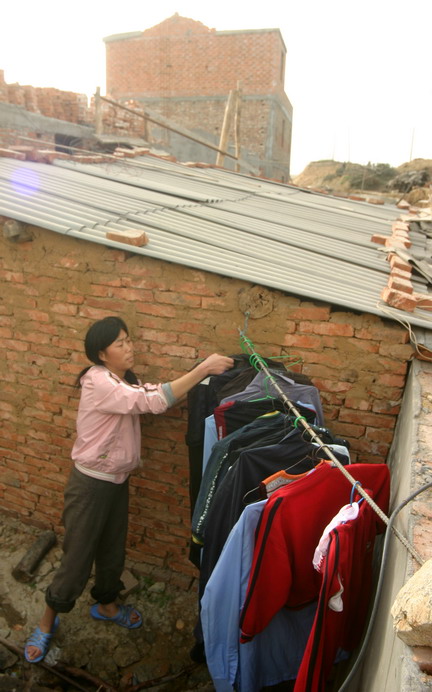
Everyday life seeps into any open space.
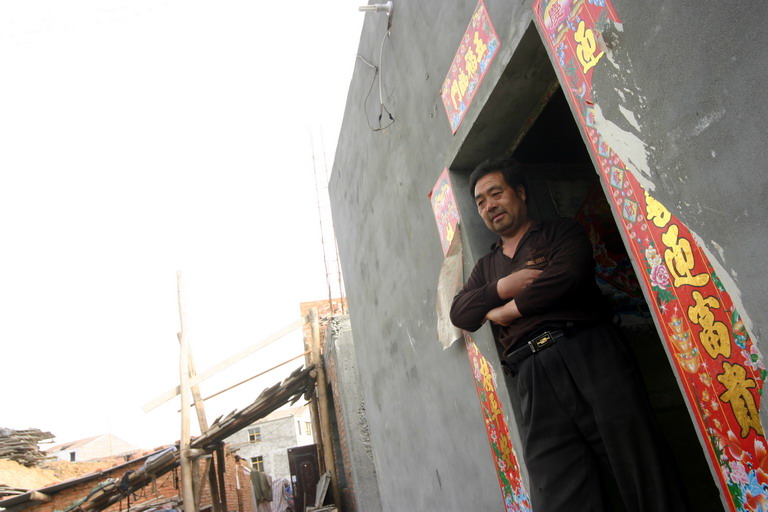
Shortly after he celebrated the Spring Festival in his half-built home, this resident had no more money to go on with construction.
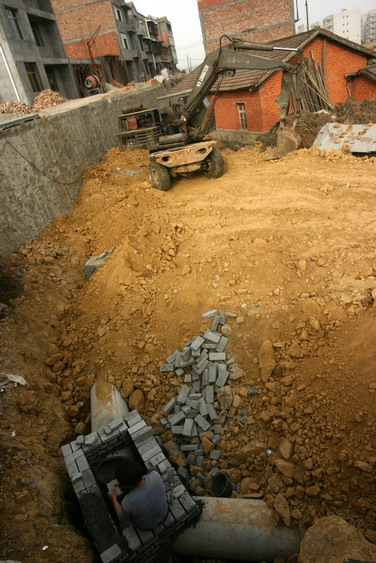
In contrast to most of his neighbors who had almost finished building their houses, this resident was still laying the foundations.

